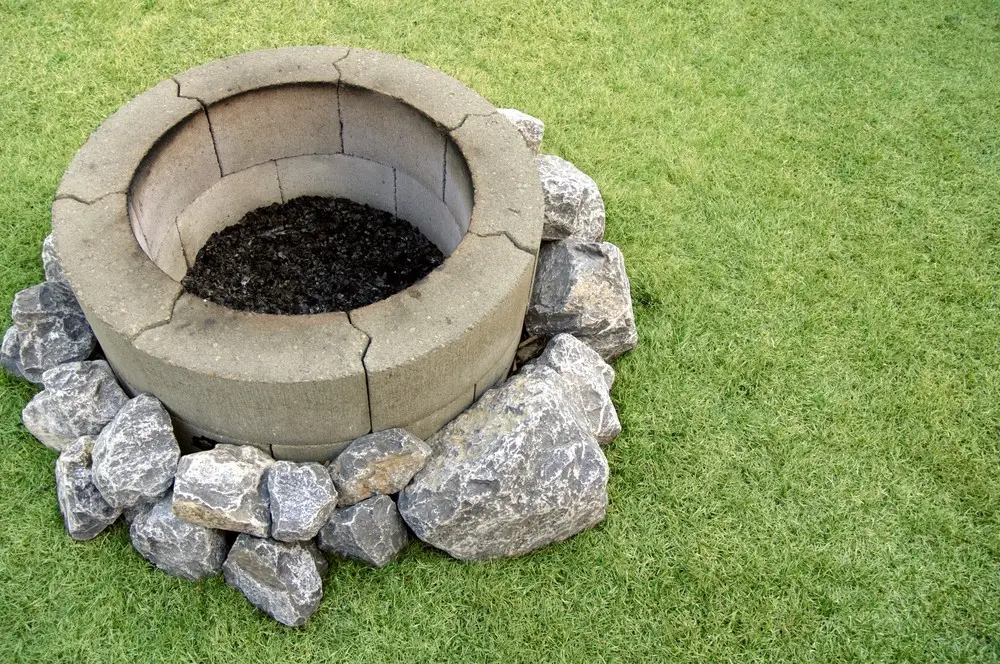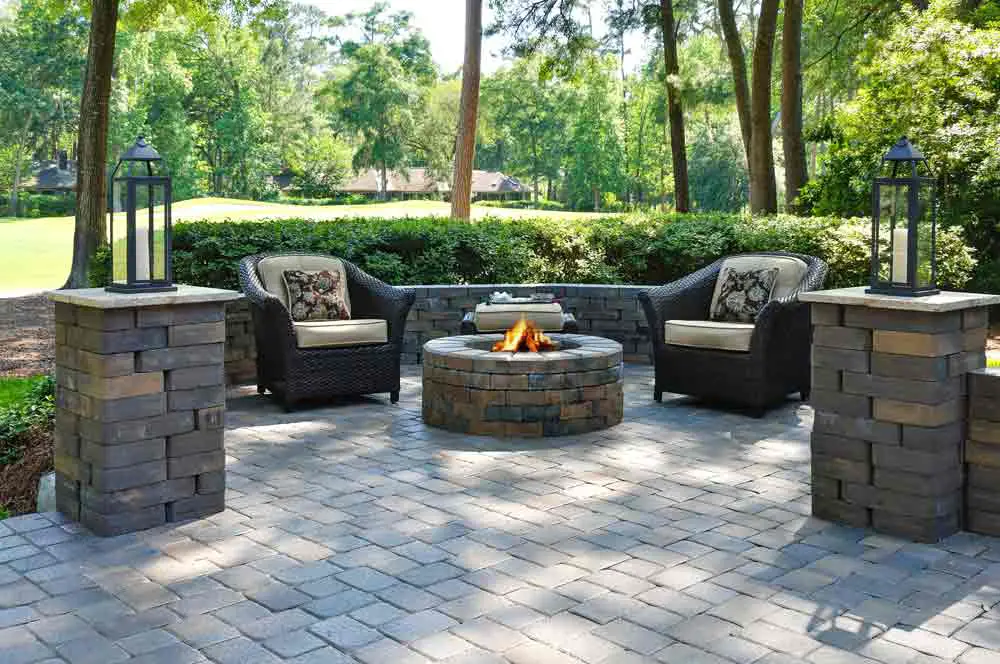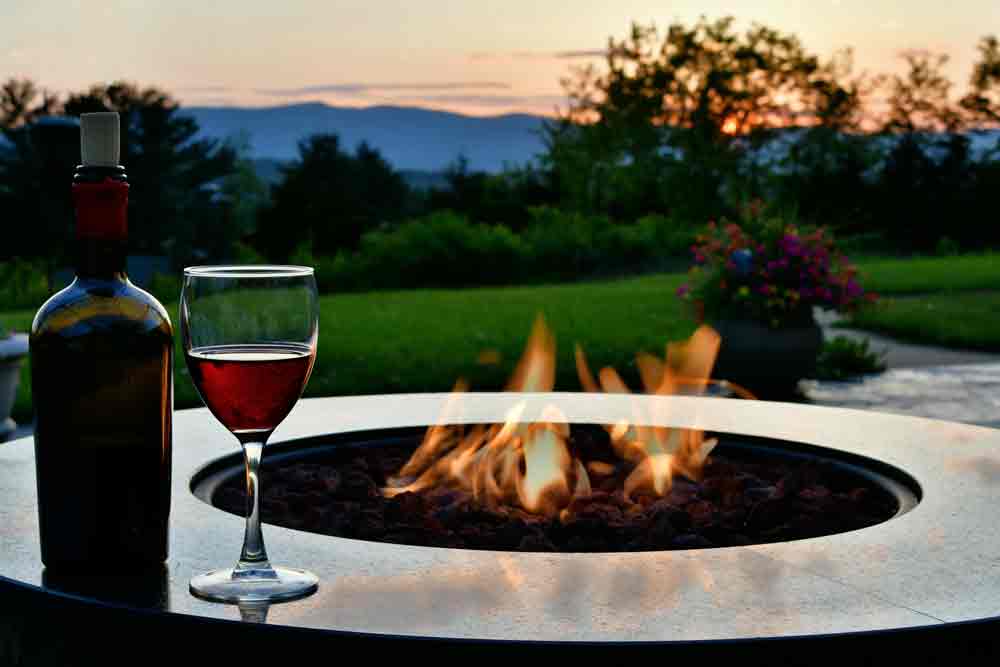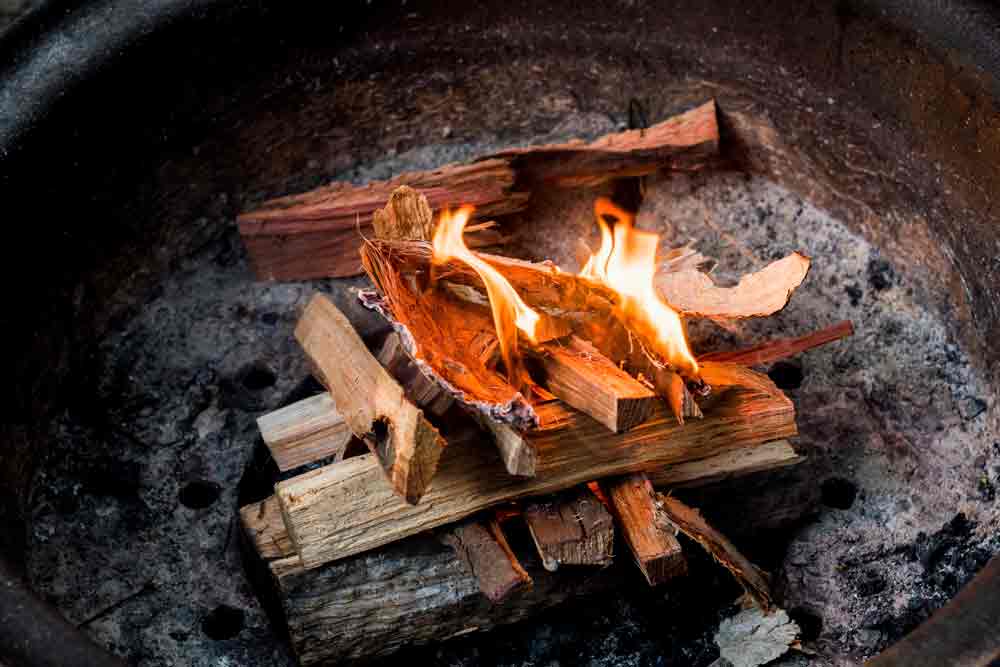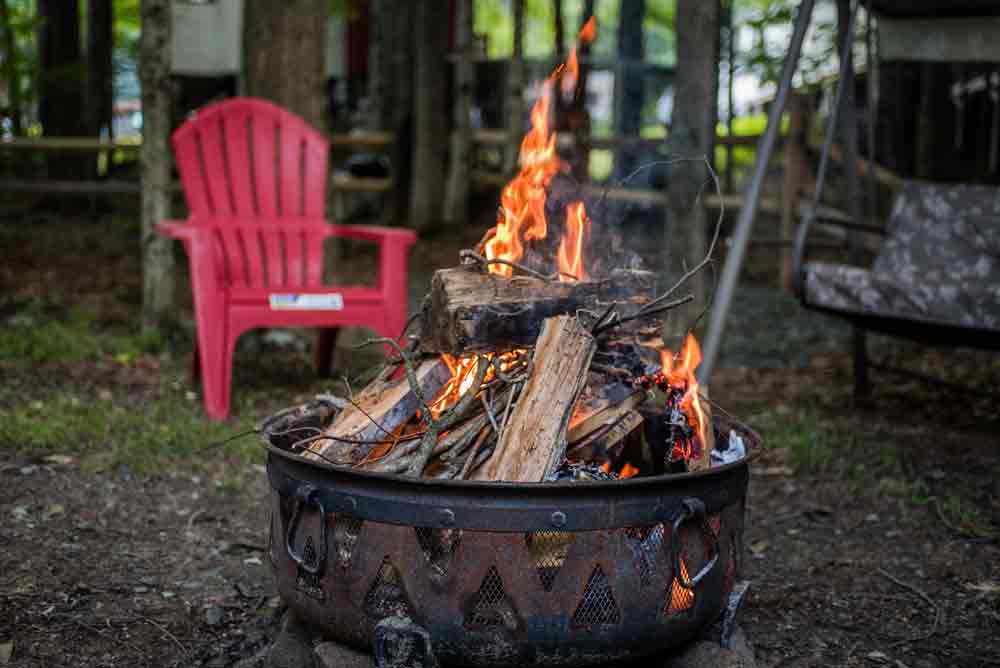What to Put in Bottom of Fire Pit? The Top Materials You Need
Once you install an outdoor pit fire, you need to know what to put in the bottom of the fire pit. Your friends and family are only there to enjoy the flames and heat, but you want to protect the bottom, and there are many materials to help you. For example, sand, dirt, lava rocks, fire pit glass, gravel, and other types of rocks are all ideal choices.
Keep reading to find out why each of these materials is a great choice. You can also learn about the different types of fire pit options if you’re still deciding.
First Considerations
It’s essential to understand your city’s local building or fire codes. Each city features different ordinances for backyard fire pit construction and ownership. Know what these are before you build your fire pit. Some locations ban all open flames, while others require you to use a screen or cover for outdoor use.
The fire pit needs to be at least 10 feet away from fences, overhanging branches, trees, bushes, and flammable structures on the property. Make sure to follow the instructions to line the bottom of a fire pit to ensure that things are done right.
What’s the Bottom of Fire Pits?
The bottom of a fire pit ultimately refers to the surface materials and ground you use to burn the fuel or kindling. Without the right bottom, the fire might not light. If it does, it could produce tons of smoke while it struggles to stay alight. Setting up your bottom is the first step to think about when building or setting up the fire pit.
Appropriate Materials for a Fire Pit Bottom
Some materials aren’t intended to be put in the bottom of the fire pit. They shouldn’t reach high temperatures and might explode or spark if the fire gets too hot. There are different opinions about the best material to use in an outdoor fire pit. However, you can use the ground as long as it’s dry enough for burning the kindling. Make sure you choose an area that’s easy to dig. Plus, the items you use must be dry as you go to light the fire.
Sand
Sand is often considered to be the most versatile option for the bottom of fire pits. Plus, it is cheap and easy to use while offering a great heat shield. The layer of sand can soak up the heat to distribute it evenly around the pit.
With that, sand protects the bowl from the intense heat the fire puts out. However, there’s a slight downside to having sand in the bottom of your fire pit. The ash can mix with it to create a slush. You’ve got to get rid of it and then add more sand to the bottom. Materials like this are often a great idea, and they’re quite easy to install in the fire pit.
Try this Silica Sand B08S2WB512
Dirt
Dirt is easy to use, free, and heat-resistant, so it’s a great choice for the bottom in fire pits. The only downside of dirt is that the ash mixes with it, which can create a sludge that turns into a mess when wet.
While it isn’t hard to clean with a shovel, you do have to dig it out and start all over. If you plan to use dirt, just expect more maintenance time. Those who are undecided might prefer sand as the better option for the fire pit, but it does have the same issue.
Lava Rocks
Generally, lava rocks are specially designed to be put at the bottom of your fire pits. They look amazing, and lava rocks are also conducive to heat. While other stones might explode or crack, the lava rock doesn’t.
Typically, these rocks are made from magma and obsidian, so if the rocks didn’t break then, they probably aren’t likely to do it in your fire pit in the garden. However, if you have a propane fire pit, the magma rock might require more maintenance. Still, these stones are a great choice for almost any fire pit imaginable.
Try these Lava Rock Granules B07DC3S62L
Fire Pit Glass
Firepit glass is a man-made material that’s highly durable. In fact, the fire glass comes in various patterns and colors. However, firepit glass doesn’t end up radiating the heat as well as your lava rocks. With that, it’s more expensive than dirt or sand. Still, it offers a great light display because the flames dance around in the reflection of your fire pit glass.
The fire glass material is also easier to maintain because there’s no smoke, soot, or ash created by it. These fire glass stones allow you to spend more time enjoying the fire pit and less time cleaning it up.
Try the Hiland Fire Glass (Bahama Blend) B00FL8LL7M
Rocks
Overall, it’s best to avoid using rocks at all, unless they are tiny stones about the size of a US dime. That limits the danger because an exploding rock can cause a lot of damage or could injure someone.
However, it doesn’t completely eliminate the threat of using rocks, so please use caution. Almost all of them can explode, especially if they are wet and porous. When the wet rock heats up, the water and trapped air inside expand forcefully and quickly to break it open.
The most common rocks to avoid in fire pits are limestone, sandstone, river rocks, and pumice. Gravel can be used, but hard ones, such as slate, marble, and granite, are denser and less likely to cause damage, so they work well in a stone fire pit.
Safe rocks to use in the fire pit include lava rocks, poured concrete, fire-rate bricks, fire glass, and others. If you use the fire pit frequently, consider covering it during inclement weather to protect you.
Try this Lava Rocks: B086VG4JP2
Gravel
Gravel might be a great material for the bottom of a fire pit. Typically, the gravel is easy to find and inexpensive. If you buy it from the store, make sure it is heat-resistant for best results.
Types of Fire Pits
You can find many reasons to use a fire pit in the backyard. For example, it adds value to the home, improves the usability of the backyard, and is a great place to enjoy your family and friends. When you can’t decide between a propane or wood fire pit, consider a dual fire bowl or ring that uses both wood and propane. They can cost more and are harder to build, but you can get more use from the pit.
It’s also important to plan to have a bigger fire pit. You want that extra space to ensure your safety while being able to add chairs and other furniture for guests to sit on.
Metal Fire Pit
A metal fire pit is a great idea, and you can get away with 1 to 2 inches of sand in the bottom. That helps to distribute the heat evenly for a burning fire. Don’t use a liner for the metal pit; the steel does a good job on its own.
Propane Fire Pit
It’s possible to put sand in your propane fire pit, but you should ensure that you don’t cover the igniters and outlets. If you’re more careless about the sand installation course, you might not get a decent flame. Therefore, other materials might be better suited to help you line the propane fire pit instead of sand.
Fixed or Portable Fire Pit
Along with these tips for finding the right materials to line the fire pit, you also want to consider whether it’s fixed or portable. A permanent fixture is great if you have an in-ground fire pit. Dig about 12 inches down when setting it up. Then, ensure that the ground is level before adding the layer of materials. When digging deeper, you must consider ventilation so that the fire has enough air to burn.
You can also use a fire bowl over the stonework, which can keep the fire elevated. Typically, a high wall around the pit is great if you’ve got pets and kids.
Protect the Grass
Prepare the space under and around the fire pit now before you light it. That way, you protect your grass from high temperatures. Clear away the dead vegetation and grass, wet it thoroughly, and then light the fire.
Build a Fire Pit Yourself
Those who want a DIY project might want to build their own fire pit. You can hire someone or do it yourself with these materials:
- Wheelbarrow
- Rake
- Shovel
- Work Gloves
- Tape Measure
- Hose
- Hand Tamper
- Construction adhesive
- Retaining blocks
- Fire bricks
- Level
- Choice of material for the bottom
Consider whether you want a liner. They prevent root fires and give you the structure you need. You can find concrete, stainless, stone, tile, cast iron, or copper options.
Fire Pit Safety Tips
Fire safety focuses on choosing the right pit site. Make sure it’s far away from buildings and other items. You should also have a garden hose handy in case the flames leap up and create an emergency situation.
Conclusion
Lining the bottom of your fire pit is a great way to have it available for many years to come. However, some filler options aren’t appropriate for fires and could blow up and injure others. Now, you know which items are suitable for a fire pit, making it easier to choose the one that fits your needs best.

